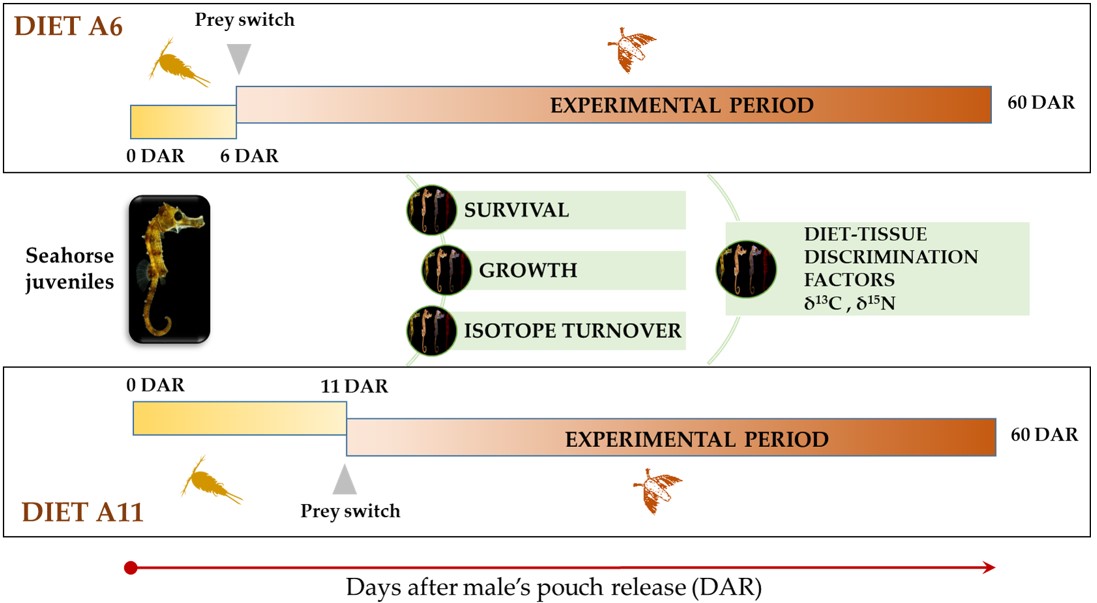The initial development of seahorse juveniles is characterized by low digestion capabilities. Stable isotope analysis is an effective tool in studies of trophic food webs and animal feeding patterns. The present study provides new insights for the understanding of growth and food assimilation in early developing seahorses following a laboratory diet switch. The study was performed in early life stages of the seahorse Hippocampus reidi by assessing the influence of diet shift on changes and turnovers in carbon (δ13C) and nitrogen (δ15N) stable isotope in juveniles. Newborn seahorses were fed for 60 days following two feeding schedules (A6 and A11) based initially on copepods Acartia tonsa and subsequently on Artemia nauplii (since days 6 and 11, respectively). After prey shift, we determined δ13C and δ15N turnover rates as functions of change in either body mass (fitting model G) and days of development (fitting model D), contributions of metabolism and growth to those turnover rates, and diet-tissue discrimination factors. Survival, final dry weight and final standard length for diet A11 were higher compared to diet A6. The shift from copepods to Artemia lead to fast initial enrichments in δ13C and δ15N. Afterwards, the enrichment was gradually reduced until reaching the isotopic equilibrium with diet. In most cases, both fitting models performed similarly. The isotopic analysis revealed that 100% of tissue turnover was attributed to growth in diet A11, whereas 19-25% was endorsed to metabolism in diet A6. Diet-tissue discrimination factors were estimated for the first time in seahorse juveniles, resulting in higher estimates for diet A11 (2.9 ± 0.7‰ for δ13C; 2.5 ± 0.2‰ for δ15N) than in diet A6 (1.8 ± 0.1‰ for δ13C; 1.9 ± 0.1‰ for δ15N). This study highlights the relevance of feeding on copepods and their effect on isotopic patterns and discrimination factors in seahorse juveniles after a dietary shift. Regarding the application of the results achieved to feeding schedules in the rearing of H. reidi, a long period of feeding on copepods during the first days of development is highly recommended.

